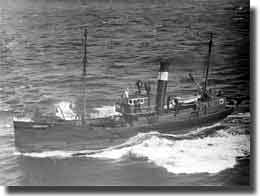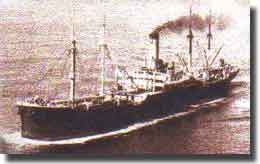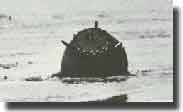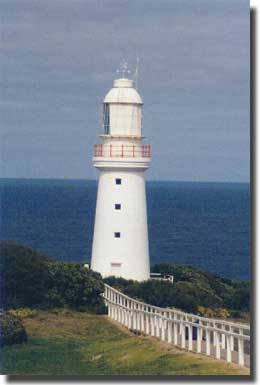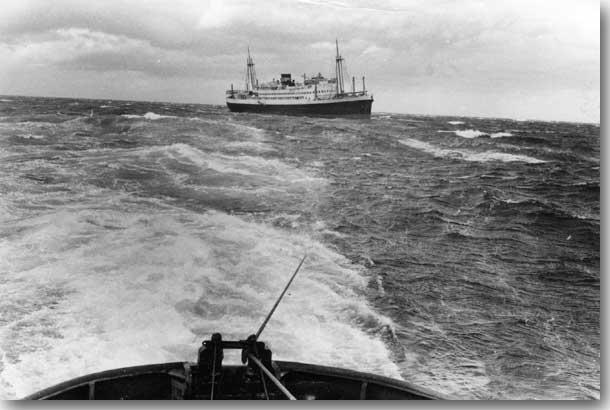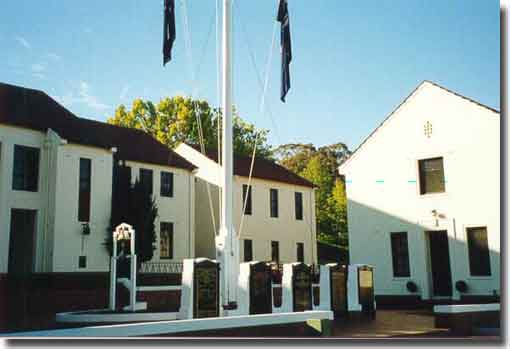|
HMAS Goorangai chopped in two by M.V. Duntroon. Small Mine Sweeper first RAN ship lost in WW2
HMAS Goorangai, of only 223 tons, fitted out as an auxiliary mine sweeper, on the night of the 20th. of November 1940, in a southerly gale, was chopped in two by the Motor Vessel Duntroon, and quickly sank with her entire crew of 24. Early life. A small ship, 112 feet long, with a beam a shade over 22 feet, was sold in 1926 to Cam and Sons Pty Limited of Sydney, and was refitted for her role as a fishing trawler. War comes in September 1939.
Cam and Sons P/L, who ran a number of fishing trawlers out of Sydney Harbour, were to provide the greatest number of ships for this project, as 8 of their trawlers were taken up, Goorangai amongst them. These mine sweepers were in the main, crewed by officers and sailors from the Royal Australian Navy Reserve, and Goorangai was no exception, she carried three officers and twenty one sailors, all reservists, except for David McGregor, a Scot, who had been skipper of Goorangai in her trawling capacity. He was signed on by the RAN as skipper with the rank of Commissioned Warrant Officer.
The German Armed Merchant Raider Pinguin, had captured the Norwegian tanker Storstad, renamed her Passat, which in German, means Trade Wind, and she was turned into an Auxiliary Mine Layer. Passat now sowed her deadly load of mines off Wilson’s Promontory and Cape Otway, on the southern coast of Victoria, over the nights of the 29th. 30th. and 31st. of October 1940. These fields soon claimed two victims over the 7th. and 8th. of November 1940, the steamer Cambridge off Wilson’s Promontory, and the City of Rayville, an American freighter off Cape Otway, the latter ship, the first US ship to be sunk in WW2. Goorangai among sweepers ordered to locate and clean up Bass Strait minefields.
On the night of the 20th. of November 1940, a southerly gale was in full cry in Port Phillip Bay, Goorangai was enroute from Queenscliff crossing the bay to Portsea, a distance of about 5 nautical miles, where she intended anchoring for the night, prior to yet another day of mine sweeping to keep the shipping lanes open, she was under way without lights. The 10,346 ton Motor Vessel and Troop Transport Duntroon, loaded with troops, was on her way down the Bay, to clear the Rip at Port Phillip Heads and sail to Sydney. At 2037 ( 8.37 PM ) she struck Goorangai amidships, quickly chopped her in half, and the small mine sweeper sank in under a minute, taking her entire crew of 24 with her, there were no survivors. The Queencliff life boat to the rescue. Only 6 bodies were recovered, and but 5 could be identified, the unidentified body was buried at sea. Duntroon was forced to return to Melbourne for repairs to her bow, and did not sail again until the 18th. of December.
My friend Don Boyle, is the son of Lieutenant Commander G. Boyle, who was the Thanks to Rick Itenson for his photo, Duntroon again in strife. Blasting the wreck of Goorangai. In January of 1941 the wreck was reduced to small pieces by blasting, and on the 16th. of November 1995 the site was declared an Historic Ship Wreck. Memorial Cairn at Queenscliff. All the crew members killed when Goorangai was run down by Duntroon are recorded on her cairn, they are:
Bell from M.V.Duntroon.
Conclusion. It was not the hazardous task of mine sweeping that claimed HMAS Goorangai, but MV Duntroon who sliced her in half. This small ship became the first Royal Australian Navy ship to be lost in WW2, and took her entire crew with her to the bottom of Port Phillip Bay on that fateful night of the 20th. of November 1940. |

